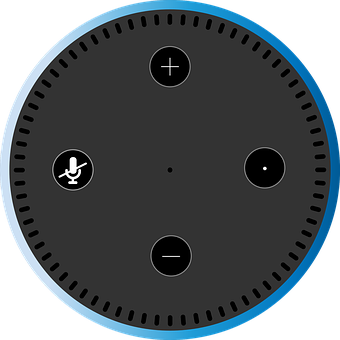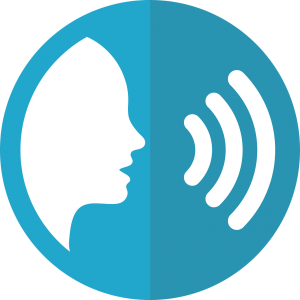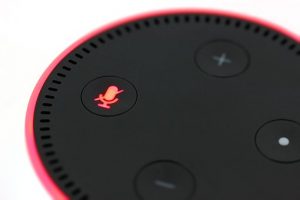Alexa Not Responding
In today’s tech-driven era, smart home devices have become an essential part of our daily lives, offering unprecedented convenience and efficiency. Among the frontrunners of this technology is Amazon’s virtual assistant, Alexa. Through its intuitive voice recognition and processing capabilities, Alexa has revolutionized the way we perform daily tasks, from setting alarms and playing music to managing smart home devices and shopping online.
 Alexa is Amazon’s virtual assistant, a cloud-based service designed to respond to an array of voice commands. This innovative technology allows users to perform a plethora of tasks, such as playing music, setting alarms, providing weather updates, controlling smart home devices, and even answering queries – all hands-free. Alexa can be accessed through various devices, including Amazon’s Echo devices, Fire TV, and many third-party products.
Alexa is Amazon’s virtual assistant, a cloud-based service designed to respond to an array of voice commands. This innovative technology allows users to perform a plethora of tasks, such as playing music, setting alarms, providing weather updates, controlling smart home devices, and even answering queries – all hands-free. Alexa can be accessed through various devices, including Amazon’s Echo devices, Fire TV, and many third-party products.
However, like all technology, Alexa is not immune to occasional glitches and issues, which can lead to a disruption in its services. One such prevalent issue experienced by users worldwide is “Alexa not responding to commands” or “Amazon Alexa not working.” This error can manifest in various ways – Alexa might stop recognizing voice commands, Alexa device is unresponsive, or cease to function altogether.
Understanding and resolving these issues promptly is critical to avoid interruptions in using Alexa’s features and services. Therefore, this blog seeks to offer a comprehensive guide to diagnosing the causes of the Amazon Alexa not working error, offering effective solutions to fix it, and providing preventive measures to avoid such problems in the future. Whether you’re a tech-savvy user or a beginner, this blog will guide you with the knowledge needed to ensure a smooth and uninterrupted Alexa experience.
Why is Alexa Not Responding?
When Alexa device is unresponsive or stops working, users encounter a variety of symptoms that signal the issue. For instance, Alexa not responding to voice commands, or the blue light ring may light up without any corresponding action. In some cases, Alexa might fail to connect to other smart home devices, or it could show an offline status even when your home network is operational. Another common symptom is Alexa misunderstanding or failing to recognize your commands, which often results in Alexa device unresponsive issue. Recognizing these symptoms helps accurately diagnose the issue and apply the appropriate fixes.
To effectively troubleshoot and fix the issue of Alexa not responding to voice or Amazon Alexa not working, it’s crucial to understand the potential causes behind it. Here are some of the most common reasons that might lead to this problem:
- Network Issues: Since Alexa relies heavily on being connected to the internet to function properly, any problems with your home network can lead to Alexa becoming unresponsive. This could be due to poor network strength, connection interruptions, or router/modem issues.
- Hardware Issues: Problems with the Alexa-enabled device itself, such as the Amazon Echo, can also cause Alexa stopped working condition. This could include issues like physical damage, microphone malfunction, or a faulty speaker.
- Software Issues: Like any other technology, bugs or glitches in the software can cause Alexa is not responding. This could be due to issues with the Alexa app, the software on your Alexa-enabled device, or even temporary issues with Amazon’s servers.
- Alexa Not Recognizing Voice: Alexa may not respond if it’s having trouble recognizing your voice. This could be due to background noise, unclear pronunciation, or the device being placed too far away.
- Power Issues: Alexa relies on a continuous power supply to operate. If there’s a disruption in this power supply, due to reasons such as power outages or issues with the power cable or adapter, Alexa may not work.
In the following sections, we will delve into how to resolve this Alexa is not working issue effectively to restore Alexa’s functionality.
How to Fix Alexa Not Responding Issue:
The key to addressing the Alexa not responding or Amazon Alexa not working issue effectively lies in understanding the root cause and applying the appropriate solution. Here are some common troubleshooting steps that you can take:
- Checking and resetting the power supply: Ensure that your Alexa device is connected to a power source and that the connection is secure. If the device is battery-powered, check if the batteries need to be replaced. You may also try resetting the power supply by unplugging the device, waiting for a few seconds, and plugging it back in.

- Checking network connections: Verify if your device is connected to the internet. If it’s not, try resetting your router or contacting your internet service provider. If the device is connected but still Alexa is not working, then try moving it closer to your router to improve signal strength.
- Rebooting the device: Sometimes, a simple reboot can resolve many issues. To reboot your device, disconnect it from the power source, wait for about a minute, and then reconnect it.
- Updating the Alexa app: Make sure that you’re using the updated version of Alexa app. Outdated versions might have bugs that can cause Alexa is not responding issues. You can check for further updates in your device’s app store.
- Re-configuring Alexa settings: If Alexa not responding to commands or not recognizing your voice, you may need to retrain it to understand your voice better. You can do this from the settings in the Alexa app.
- Factory Reset: If above steps won’t work, you might have to resort to a factory reset. This will erase all settings & data from the device, and you’ll have to set it up as new. It’s important to note that a factory reset should be your last resort and is generally recommended only if you’re certain the issue lies with your device.
If none of the troubleshooting steps work, the issue might be with the device’s hardware, which might require professional repair or replacement.
If you’re unable to connect to Amazon’s servers, the problem might be on their end. Check Amazon’s service status, and if there are any ongoing issues, you might have to wait for them to resolve it.
Remember, troubleshooting involves a process of elimination. Try the simplest solutions first, and if they don’t work, progressively move to more complex ones. In many cases, the Alexa device unresponsive issues are temporary and can be resolved with basic troubleshooting steps.
How to Prevent Alexa Not working Issue:
Prevention is always better than cure. To minimize the chances of encountering the Alexa not responding but lighting up or Alexa not working issue, here are some preventative measures that can be implemented:
- Regularly updating the Alexa app: Ensure that the Alexa app on your smartphone or tablet is always updated to the latest version. Each update comes with bug fixes and improvements that enhance the performance & stability of the app, minimizing potential issues.
- Maintaining a stable network connection: Alexa’s functionality heavily relies on a stable internet connection. Regularly check your home network to ensure it’s functioning optimally. If you frequently face network issues, it may be worth investing in a more reliable internet service or a better router.
- Regularly checking and maintaining the Alexa-enabled device: Physical damage to the device or its components can lead to various issues. Regularly inspect your Alexa-enabled device for any signs of damage and address them promptly. Also, ensure that the device is kept clean and free from dust, as this can affect its performance.

- Proper usage and handling of Alexa devices: Make sure you’re using the Alexa device as per the manufacturer’s guidelines. Avoid exposing the Alexa device to extreme temperatures, moisture, or physical shock. All these can negatively impact the device’s hardware and lead to problems.
- Following Amazon guidelines for optimal usage of Alexa: Amazon provides guidelines for optimal usage of Alexa, such as the optimal distance for voice recognition, placement of the device, etc. Following these guidelines can help avoid common issues like Alexa not recognizing your voice.
Implementing these preventive measures can significantly reduce the chances of facing the Alexa not responding but lighting up or Alexa not working issue, leading to a smoother and more enjoyable Alexa experience.
Conclusion:
As technology continues to evolve & become an integral part of our lives, understanding how to effectively use and troubleshoot devices like Alexa becomes increasingly important. Issues like Alexa not responding to commands or Alexa not working are common and can occur due to a variety of reasons, from network and software issues to hardware and power-related problems.
Through this comprehensive guide, we hope you’ve gained valuable insights into the potential causes of these issues, and more importantly, how to address them effectively. The solutions provided, ranging from basic to advanced troubleshooting steps, are designed to help you navigate these challenges and restore Alexa’s functionality swiftly.
Moreover, adopting the preventive measures outlined in this blog can help you avoid these Alexa device unresponsive issues in the first place. Regular updates, network maintenance, proper handling of devices, and adherence to Amazon’s guidelines are critical in ensuring a smooth and hassle-free Alexa experience.
We encourage you to continue exploring more about smart home technology and its troubleshooting to empower yourself in this connected world.
In the end, remember that while technology can sometimes fail us, there are always ways to fix it and continue to enjoy its numerous benefits. Uses can also navigate to the Alexa Support page to know more about Alexa setup & troubleshooting related issues.

